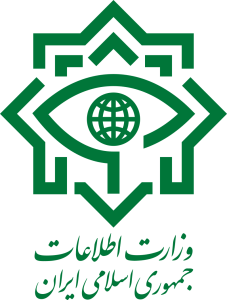In a significant and alarming development amidst the already fraught relations between Israel and Iran, a document purportedly issued by Iranian intelligence has emerged, listing senior Israeli officials as targets for assassination. This list, titled “Execution List of Israeli Terrorists,” includes the names and images of top Israeli military and political leaders, underscoring a new phase of tension between the two adversaries.

The Document Breakdown
The document in question, which prominently features the logo of the Iranian Ministry of Intelligence, displays 13 high-ranking Israeli figures, including:
Prime Minister Benjamin Netanyahu
Minister of Defense Yoav Gallant
Chief of the General Staff Herzi Halevi
Commander of the Israeli Air Force Tomer Bar
Commander of the Israeli Navy Saar Salama
Chief of Ground Forces Tamir Yadai
Deputy Chief of the General Staff Amir Baram
Head of Military Intelligence Aharon Haliva
Head of Northern Command Ori Gordin
Head of Central Command Yehuda Fox
Head of Southern Command Eliezer Toledano
These individuals represent the upper echelons of Israel’s defense establishment, signaling that Iran may be intensifying its strategy in response to Israeli operations in the region. This list can be viewed as a stark message from Tehran, demonstrating both its intelligence capabilities and the seriousness of its intentions toward Israel.
Symbolism and Messaging
The inclusion of Netanyahu, a long-standing opponent of Iran’s regional influence, particularly with his recent moves to forge regional alliances against Tehran, positions this list as a direct warning against Israel’s current military actions. The label “terrorists” reflects Tehran’s narrative that Israel’s military operations, particularly in Palestinian territories and Syria, constitute acts of aggression and state terrorism.
The prominence of military leaders like Chief of Staff Herzi Halevi and the commanders of the Air Force, Navy, and Ground Forces also implies a potential response to Israel’s operational dominance in the region. In recent years, Israel has carried out numerous airstrikes in Syria and Iraq targeting Iranian forces and their proxies, further heightening tensions.
While the Iran-Israel conflict has historically operated through proxy wars—mainly in Lebanon, Syria, and Gaza—this document seems to signal a potential shift towards direct targeting of Israeli leaders. Iran’s release of such a document follows years of covert actions between the two nations, including cyberattacks, assassinations of nuclear scientists, and military engagements in Syria.
By releasing an “execution list,” Iran may be seeking to deter future Israeli strikes on its regional interests or provoke a more calculated response. The naming of military leaders such as Tomer Bar (Air Force), who is instrumental in orchestrating Israeli air operations, particularly against Iranian targets, indicates that the Islamic Republic views these figures as direct threats to its regional strategy.

Broader Security Concerns
This move has serious implications for the already volatile Middle East, where Iran’s influence has been met with growing resistance from Israel and its allies. In particular, Israel’s recent normalization deals with several Arab nations under the Abraham Accords have been seen by Tehran as an attempt to isolate it further in the region. This document, then, could be seen as a response to both these geopolitical developments and Israel’s ongoing military campaigns against Iranian positions in Syria.
While it remains unclear whether this document signals an imminent series of targeted attacks or a psychological tactic designed to unnerve Israeli leadership, the public nature of this list may escalate tensions between the two nations. In light of the recent escalation of violence between Israel and Hamas in Gaza, as well as ongoing security concerns in the West Bank and Lebanon, this list might be another precursor to increased hostilities.
This development is likely to raise alarm in the international community, with both the United States and European Union keeping a close watch on the Israel-Iran conflict. Any actualized threats from Iran could provoke direct responses from Israel, leading to broader regional instability. Moreover, it may draw in global powers who have vested interests in maintaining peace in the Middle East, especially as the region remains a critical hub for energy resources.
The release of this document highlights the ever-present threat of escalation between Israel and Iran. As the two nations continue their shadow conflict, any move towards direct action, as implied by this list, could spark a broader military confrontation. Both sides are likely to continue their intelligence and counterintelligence efforts in the coming months, raising the stakes for not only regional security but global stability as well.



